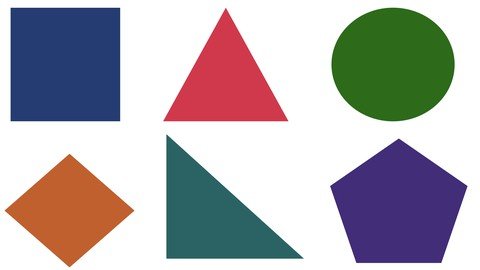
Published 4/2023
MP4 | Video: h264, 1280x720 | Audio: AAC, 44.1 KHz
Language: English | Size: 6.87 GB | Duration: 17h 30m
Fundamentals , Subnetting , Functions
Free Download What you'll learn
IPv4 Fundamentals
IPv4 Address Classes
IPv4 Address Types
Classful and Classless IPv4 Address
IPv4 Address Subnetting
IPv4 Addressing Operational View
IPv4 Address Analyzing
IPv4 Header
IPv4 Type of Service (ToS)
IPv4 Private Addressing and NAT
IPv4 Addressing Design Guidelines
Case Study and DHCP and BootP
IPv4 Addressing and DHCP for IPv4
Requirements
This course doesn't have any requirement .
You can study it as the first network course.
Description
Internet Protocol version 4 (IPv4) is the fourth version of the standard that routes Internet traffic and other packet-switched networks introduced in 1982 by the Internet Engineering Task Force (IETF). IPv4 is the most widely used version of the protocol despite the limitations of its 32-bit address space. With slightly less than 4.3 billion available unique addresses, the available number of addresses quickly began to run out. With some clever ingenuity over the years that extended the life of the protocol, the pool of available addresses didn't dry up until 2011.An Internet Protocol address is a unique identifier for devices connected to a network. The unique identifier makes it possible for devices to find and communicate with each other. Initially, the main types of devices that required an IP address included network devices, such as computers, servers, routers, and printers. However, with the Internet of Things, the list includes cell phones, televisions, refrigerators, automobiles, light bulbs, or anything else capable of receiving or exchanging information over a network.An IPv4 address is a series of four eight-bit binary numbers separated by a decimal point. Although you may use any numbering system to represent a unique 32-bit number, most commonly you see IP addresses expressed in dot-decimal notation.
Overview
Section 1: Internet Protocol ( IP ) version 4
Lecture 1 IP Fundamentals
Lecture 2 IP Address Classes
Lecture 3 IP Address Types
Lecture 4 Classful and Classless IP Address
Lecture 5 IP Address Subnetting[A]
Lecture 6 IP Address Subnetting
Lecture 7 IP Addressing Operational View
Lecture 8 IP Address Analyzing
Lecture 9 IPv4 Header
Lecture 10 Type of Service(ToS)
Lecture 11 IPv4 Private Addressing and NAT[A]
Lecture 12 IPv4 Private Addressing and NAT
Lecture 13 IPv4 Addressing Design Guidelines
Lecture 14 Case Study and DHCP and BootP
Lecture 15 IPv4 Addressing and DHCP for IPv4
Network Engineers,CCNA Candidates
Homepage
Code:
https://www.udemy.com/course/ipv4-addressing-subnetting-by-arash-deljoo/Recommend Download Link Hight Speed | Please Say Thanks Keep Topic Live
Download Rapidgator
jvxph.I.A..S.B.A.D.part1.rar.html
jvxph.I.A..S.B.A.D.part8.rar.html
jvxph.I.A..S.B.A.D.part6.rar.html
jvxph.I.A..S.B.A.D.part2.rar.html
jvxph.I.A..S.B.A.D.part4.rar.html
jvxph.I.A..S.B.A.D.part3.rar.html
jvxph.I.A..S.B.A.D.part5.rar.html
jvxph.I.A..S.B.A.D.part7.rar.html
Download Uploadgig
jvxph.I.A..S.B.A.D.part4.rar
jvxph.I.A..S.B.A.D.part5.rar
jvxph.I.A..S.B.A.D.part2.rar
jvxph.I.A..S.B.A.D.part1.rar
jvxph.I.A..S.B.A.D.part3.rar
jvxph.I.A..S.B.A.D.part7.rar
jvxph.I.A..S.B.A.D.part8.rar
jvxph.I.A..S.B.A.D.part6.rar
Download Nitroflare
jvxph.I.A..S.B.A.D.part3.rar
jvxph.I.A..S.B.A.D.part1.rar
jvxph.I.A..S.B.A.D.part2.rar
jvxph.I.A..S.B.A.D.part6.rar
jvxph.I.A..S.B.A.D.part5.rar
jvxph.I.A..S.B.A.D.part7.rar
jvxph.I.A..S.B.A.D.part8.rar
jvxph.I.A..S.B.A.D.part4.rar
Links are Interchangeable - Single Extraction


